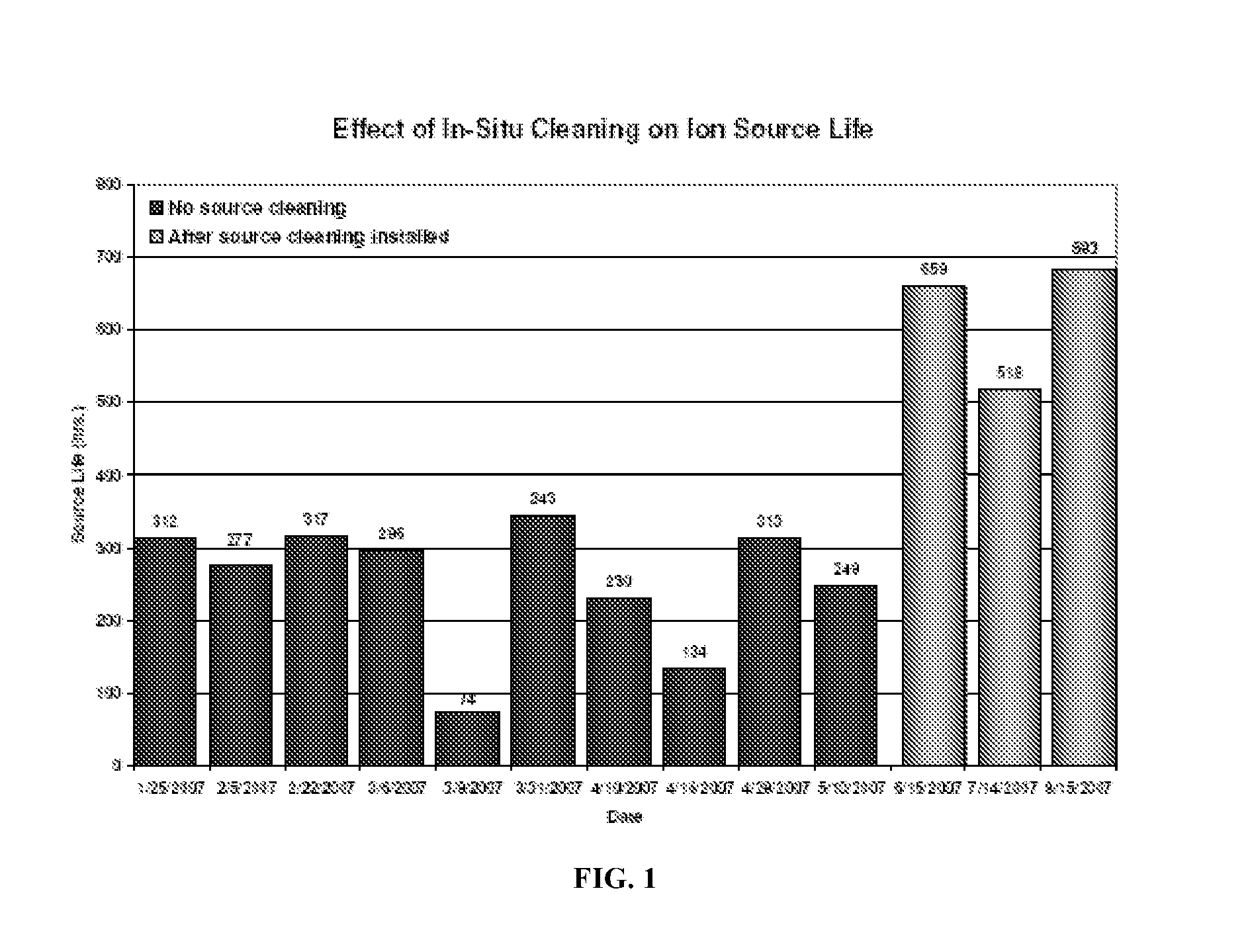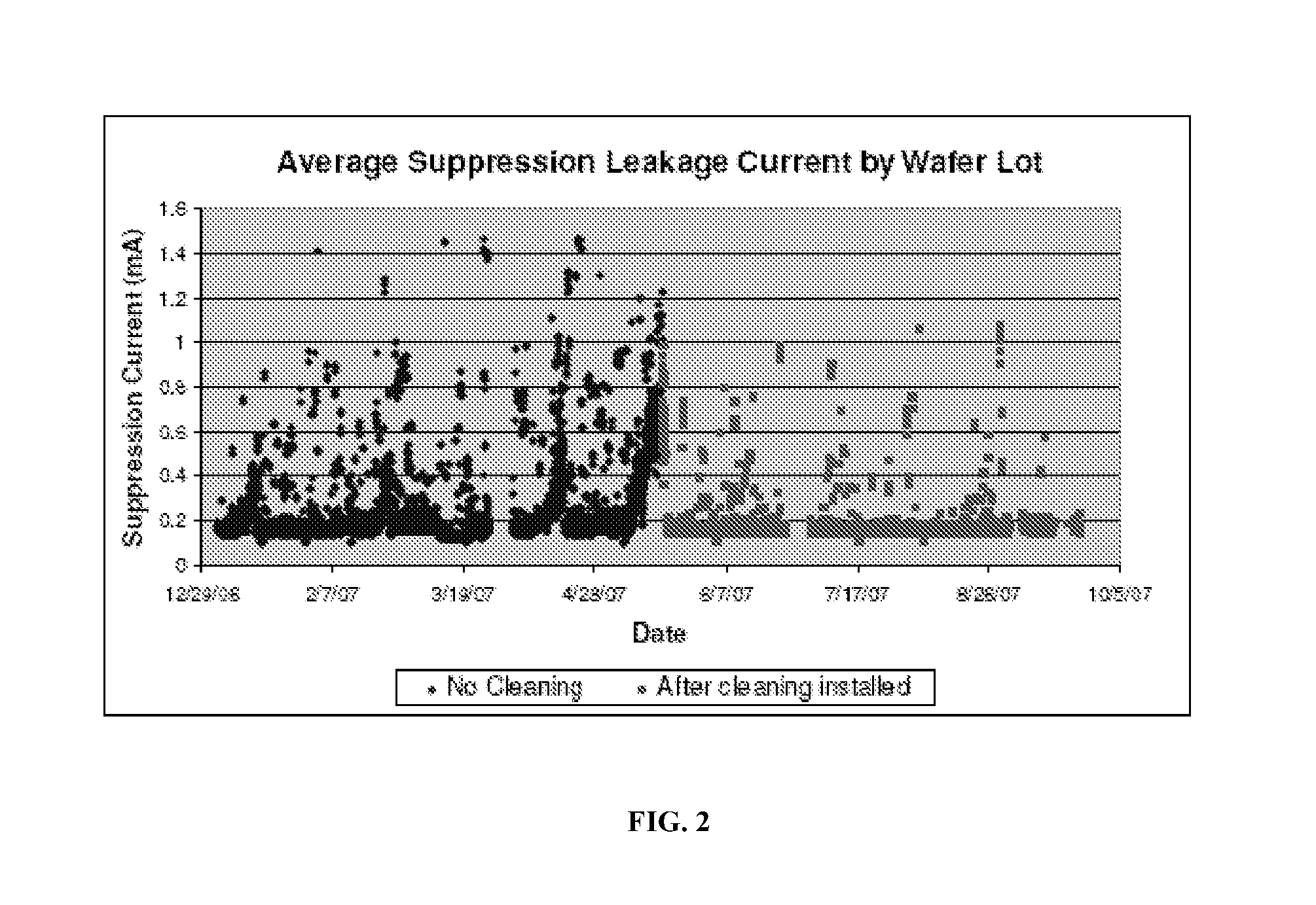Ion source cleaning in semiconductor processing systems
a technology of ion source and processing system, which is applied in the direction of vacuum evaporation coating, cleaning of hollow articles, coatings, etc., can solve the problems of affecting the performance of the ion source, affecting the ion source region, and affecting the ion source lifetime, so as to prolong the lifetime of the ion implant system and improve the performance. , the effect of improving the performan
- Summary
- Abstract
- Description
- Claims
- Application Information
AI Technical Summary
Benefits of technology
Problems solved by technology
Method used
Image
Examples
example 1
[0142]This example shows the improvement in ion source lifetime and implanter utilization that is achievable by use of a chemical cleaning agent to remove deposits. Preferably, the deposits are removed at regular intervals to prevent buildup of contaminant flakes and conductive films in the implanter.
[0143]In-situ cleaning was carried out by introducing XeF2 at regular intervals from a supply vessel thereof positioned in the gas box of the ion implanter, with XeF2 cleaning vapor introduced into the ion source for 10-15 minutes twice a day. A high current implanter was utilized for testing to assess flow dynamics of the cleaning reagent. XeF2 cleaning properties were determined and it was verified that the cleaning agent had no adverse effect on the implanter's beamline components. The cleaning process using the XeF2 reagent then was qualified for use with a medium current implanter apparatus.
[0144]FIG. 1 is a graph of compiled source lifetime data from such medium current implanter,...
example 2
[0158]This example demonstrates the control of filament growth, in an ion source of an illustrative ion implanter system.
[0159]FIG. 5A is a graph showing the effects of XeF2 flow and arc power variation, with respect to increased filament current and weight. The graph shows filament weight in grams, as a function of elapsed time, in hours, of operation of the implanter system. The upper line in the graph represented operation at an XeF2 flow of 2.2 standard cubic centimeters per minute (sccm) and arc power of 100 volts / 0.05 amps, for which a filament weight gain of 319 milligrams / hour was determined after 3 hours of operation. The lower line in the graph reflected an XeF2 flow of 0.5 seem and arc power of 40 volts / 0.05 amps, which produced a filament weight gain of 63 milligrams / hour for the 3 hour duration of operation.
[0160]FIG. 5B is a graph showing the effects of XeF2 flow and arc power variation, with respect to filament current. The graph shows filament current in amperes, as ...
PUM
| Property | Measurement | Unit |
|---|---|---|
| Flow rate | aaaaa | aaaaa |
| Mass | aaaaa | aaaaa |
| Mass | aaaaa | aaaaa |
Abstract
Description
Claims
Application Information
 Login to View More
Login to View More - R&D
- Intellectual Property
- Life Sciences
- Materials
- Tech Scout
- Unparalleled Data Quality
- Higher Quality Content
- 60% Fewer Hallucinations
Browse by: Latest US Patents, China's latest patents, Technical Efficacy Thesaurus, Application Domain, Technology Topic, Popular Technical Reports.
© 2025 PatSnap. All rights reserved.Legal|Privacy policy|Modern Slavery Act Transparency Statement|Sitemap|About US| Contact US: help@patsnap.com



